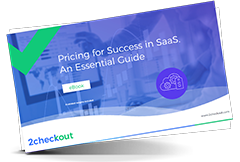
There are a lot of different ways to set your subscription prices. While reviewing the competition and the prices they are charging is one strategy, it is by no means the most important. Companies today need to look at the customer and the value their service is providing to them.
When focusing on value, look at your product or service from the customers’ point of view and consider how useful they perceive the service to be as well as their budget and the price they’re willing to pay. It’s important to keep in mind that not everyone is going to be able to pay the same amount for a subscription service so having different options available is essential. More than that, throughout the life of the subscription customers are constantly evaluating the value they receive versus the money they pay and a decision is taken every time a subscription gets to the expiration date with the option to be renewed. This is one of the moments when having different pricing options in place helps you offer the best solution based on their needs and perception of the value at that particular time.
For any business, revenue is key. That’s why it’s crucial to have a pricing strategy that’s flexible and adaptive. Pricing, however, is such an important aspect of the product mix that one cannot simply set it and forget it. For SaaS businesses in particular, pricing should be evaluated regularly based on changing market conditions, business goals, and target audiences. Many companies only spend roughly 10 hours per year on this activity, but with SaaS organizations, pricing should be updated much more frequently. Different market studies have shown that companies who periodically update their pricing to keep it relevant for audiences are able to almost double the average revenue per user. Read on to understand why pricing updates are a must in subscriptions and what you should consider before starting this type of update project.





 The post Why Being Flexible and Adaptive With Your Subscription Pricing is Important appeared first on The 2Checkout Blog | Articles on eCommerce, Payments, CRO and more.
The post Why Being Flexible and Adaptive With Your Subscription Pricing is Important appeared first on The 2Checkout Blog | Articles on eCommerce, Payments, CRO and more.
Source
https://www.badadeal.com/why-being-flexible-and-adaptive-with-your-subscription-pricing-is-important/?feed_id=3945
Knowing When to Update Your Pricing
Prices should never be static. They need to adapt to changing market and environmental conditions. For example, the pandemic forced many businesses to change their pricing structures. Some had to lower prices to stay competitive, while others could raise prices due to increased demand for their product or service. No matter what the circumstances are, it’s important to be flexible with your pricing to continue generating revenue and growing your business. There are a few key indicators you should look out for, that will tell you when it’s time to look at what you’re charging your clients:- You’re not hitting your revenue goals
- Your target market has changed
- Your costs have changed
- The competition has changed their prices

Preparing for a Pricing Update
Earlier, it was mentioned that many companies spend only a handful of hours a year looking at their pricing. However, well thought out pricing is essential to any business. If you don’t put enough time into it or never change your prices, then you’ll likely leave revenue on the table. When it’s time to update your pricing, here are a few things you should do:Review your current pricing
The first step is understanding where you currently stand. This means taking a close look at what you’re charging and how that compares to the market. If you’re not sure where to start, try surveying your target market. You can also use online resources to benchmark your prices against competitors. Also, have a thought about the last pricing updates you were doing and what was the evolution of the market conditions since then, try to identify important events happening which could have driven price changes.Define your goals
After reviewing your current pricing, it’s time to set some goals for what you want to achieve with a price change. Do you want to increase revenue by 10%? Drive more sales volume? Get more customers? Once you have a goal in mind, you can start developing a pricing strategy that’ll help you reach it. This is where market research can be extremely helpful. Take a look at what your competitors are charging and see how your prices compare. If you’re selling similar products or services, you’ll want to make sure your prices are in the same ballpark. While market research and analysis can be time-consuming, you can avoid getting bogged down in analysis paralysis by setting specific deadlines.Evaluating Customer Feedback
Customer feedback is essential in helping you understand if your pricing is working. If customers are constantly asking for discounts or complaining about prices, that’s a sign that your prices might be too high. On the other hand, if you’re regularly getting compliments on your pricing or hearing that your prices are “competitive,” that’s a good sign that you’re on the right track. You can also use customer feedback to help you optimize your subscription pricing plans. For instance, let’s say your business offers three different tiers of service: basic, premium, and deluxe. If most of your customers are only using the basic features, that’s a sign that your premium and deluxe plans might be too expensive or might have features that don’t warrant the higher expense from your customers’ point of view. Or, if you were offering discounts or vouchers for the subscription acquisition or at any other moment during the subscription lifecycle after which your customers have simply left without showing interest in your products anymore, it’s a clear indicator that your prices are way too high. You should pay more attention to the customers who were using your products for a while after which they decided to leave, their feedback is crucial.
Understanding Customer Value
One of the most important things to remember when setting your subscription pricing is that you’re not just selling a service or product, you’re selling value. To optimize your pricing plans, you need to have a clear understanding of the value that your customers place on what you’re offering. There are a few different ways to go about understanding customer value. The first is to simply ask them directly. This can be done through surveys, interviews, or even casual conversations. Another way is to track metrics such as customer churn rate and lifetime value. If you see that customers are regularly cancelling their subscriptions or not using your service for long periods, that’s a sign that they don’t see a lot of value in what you’re offering. Customer churn can be looked at from several angles, not only cancelling the subscription but also choosing to buy cheaper plans or even the customer preference to manually renew the subscription instead of letting the system renew it on his/her behalf. It’s also important to keep in mind that customer value can change over time. What might have been a valuable feature to customers last year may not be as critical to them now. This is why companies need to be constantly surveying and talking to their customers to understand how their needs are changing.How to Update Pricing
To find the right price point for your business, start by evaluating your target market, understanding their needs and budget, and determining what they’re willing to pay. From there, you can experiment with different pricing models and price points to see what works best. There are a few different ways you can go about changing your prices. You could increase your prices across the board, or target specific products or services. You could also implement a tiered pricing structure, where you offer different levels of service at different price points. Once you have a good understanding of the market, it’s time to start thinking about how you can price your products or services to reach your goals. There are various pricing strategies you can use to achieve different objectives:Find the optimal pricing point – price sensitivity meter
When you’re deciding on your subscription pricing, it’s important to consider your customer base. What can they afford? What are they willing to pay? What do they need from your service? Asking these questions will help you determine the best pricing model for your business. By willingly adjusting your prices based on customer feedback and data, you’ll be able to find the sweet spot that maximizes your earnings.Cost-plus pricing
This is where you calculate your costs and then add a markup to determine the price. This is often used when selling to other businesses, as it guarantees that you’re covering your costs and making a profit.
Calculate CLTV & track churn rate
Customer Lifetime Value (CLTV) is a metric that considers how much revenue a customer will generate for your business throughout their relationship with you. Churn rate, on the other hand, is the percentage of customers who cancel or don’t renew their subscription within a certain period, which in the end translates in lost revenue which those customers would have brought if they were continuing using your products. Both of these metrics are important to track when setting your prices because they’ll give you insights into how much value each customer brings to your business and how likely they are to stick around. If you have a high churn rate, it may be indicative of an issue with your pricing. To combat high churn, you can:- Offer different tiers of service
- Offer Discounts & Coupons
- Consider Customer Segmentation

- Charge based on usage
- Trial subscriptions with the option to convert to full-price plans
- Freemium and Premium pricing plans
Price Based on Time
While you can and should increase your prices regularly, you might want to offer special promotional rates to current customers to keep them loyal. By “grandfathering” certain segments, they’re guaranteed the current price for a set period. This can help with your forecasting as you’ll know they’re likely to remain with the business while the discount applies, and you can then charge a higher rate to new customers.Build a communication plan
If you do decide on changing your subscription pricing, it’s important to have a solid communication plan in place. You don’t want to anger or frustrate your customers with a price hike, so make sure they know what to expect and why the changes are being made. Keep your customer service team in the loop as well, so they can answer any questions or concerns that arise.
Align your pricing with your growth strategy
As your business grows, your subscription pricing should grow with it. If you’re aiming to scale quickly, you’ll need to make sure your pricing aligns with that strategy. Your plans need to account for the costs of acquiring new customers, as well as the costs of keeping your existing ones. Companies that are just starting might need to be more aggressive with their pricing to attract customers. But as they scale, they might want to adjust their prices accordingly. Otherwise, these businesses risk alienating their existing customer base or deterring potential new customers. The bottom line is that subscription pricing is a moving target. What works today may not work tomorrow. By being flexible and adaptive, you can make sure your pricing always meets the needs of your business – and your customers.Conclusion
Of course, there are certain risks associated with changing your prices. If you make any sudden, significant adjustments, you could lose customers who feel like they’re being priced out. That’s why it’s important to make sure that any changes you make are gradual and that you communicate them in advance and regularly. Help your customers understand the reasons why this is happening and also make sure to explain the benefits they’ll realize by sticking with your service. As long as you’re thoughtful and strategic about it, making changes to your subscription pricing can be a great way to grow your business. It can help you attract new customers and also increase revenue from your existing ones. So don’t be afraid to experiment with different pricing models and strategies, and always be prepared to adapt as both the market and your business evolve. For more details about pricing your subscriptions products, read our free guide on Pricing for Success in SaaS. The post Why Being Flexible and Adaptive With Your Subscription Pricing is Important appeared first on The 2Checkout Blog | Articles on eCommerce, Payments, CRO and more.
The post Why Being Flexible and Adaptive With Your Subscription Pricing is Important appeared first on The 2Checkout Blog | Articles on eCommerce, Payments, CRO and more.
Comments
Post a Comment